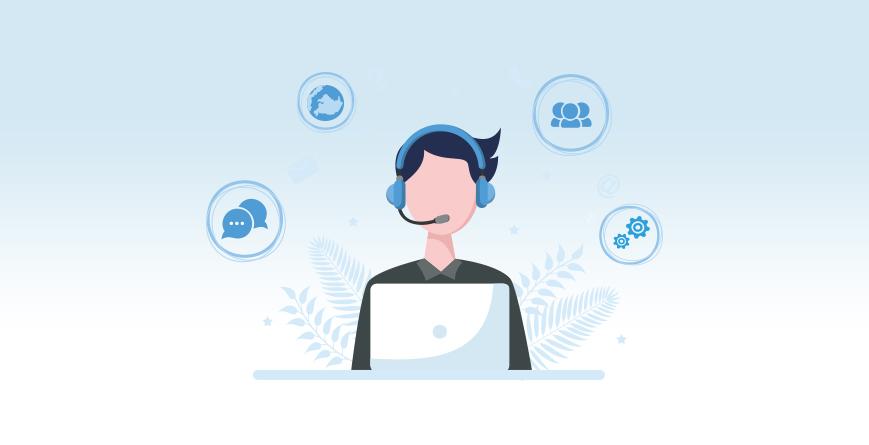As more customers become eager to try out different methods of communicating with brands, businesses are doing the same. Many businesses are now diversifying their channels of interaction in customer contact centres.
Customers who have queries that do not require immediate attention are willing to approach businesses via channels they prefer the most. The different mediums that customer contact centres are venturing into include websites, mobile applications, chatbots, social media, etc.
In addition to providing an enhanced customer experience, allowing for different alternatives also provides more customer flexibility.
Enabling contact centres to have omnichannel support is now one of the biggest priorities for businesses. This allows their customers to reach them however they want, whenever they want and by using a medium of their own preference. In fact, 91% of contact centres are now prioritising omnichannel capabilities to ensure complete customer comfort and flexibility.
What exactly is multi-media blending?
The blend of tools, technologies and processes that enable contact centres to exchange information across an array of media channels is referred to as multi-media blending.
Multi-media blending facilitates end-to-end unification of different communication channels in order to align data down into a single source. This is used to synchronise customer information collected on different communication channels and provide a more seamless and tech-savvy customer experience.
Different techniques to include multi-media blending
Different mediums of communication can be blended using different techniques. Unifying different channels eases the workload of support agents, removing monotonous work and allowing them to focus on more important and immediate customer queries.
Some primary approaches that facilitate smoother multi-media blending in contact centres are:
-
Time-boxing
Allocating resources for different mediums based on a specific amount of time is known as time-boxing. In this technique, a media channel is handled by a set of agents through specific time-boxes during the day.
In order to successfully implement the time-boxing method, it is important to stick to the time goals set and not spend more time on a given task.
Proactively deciding a deadline for each task instead of working on it until it gets over, is one of the most important aspects of effective time-boxing. It is important to understand the volume of work in advance so as to correctly identify the required resources for each task.
-
Interleaving
Interleaving is a method that assigns each interaction based on priority, agent availability and the projected value of the same.
As a technique, interleaving largely depends on agent availability, routing any upcoming interaction independent of the chosen medium. Spreading agents to oversee different mediums also provides more efficiency in contact centre operations.
Interleaving allows for the optimum utilisation of omnichannel customer support staff. If the priority of work is clearly established, this technique can help in managing work based on volume, thereby increasing agent occupancy and productivity.
-
Multitasking
Agents who handle more than one real-time interaction at a given time, practise multitasking. This technique helps agents manage their day and time more efficiently.
This works best for channels that do not require verbal interaction, such as chatting, emailing and communicating over social media channels.
Some quick tips to keep in mind when multitasking:
- Ensuring agents are not overburdened that it affects the overall customer experience
- Regularly monitoring agent performance by using surveys and quality management strategies
- Avoiding multitasking on verbal with non-verbal interactions
-
Multimodal
To reduce the effort customers have to put in while interacting with a business and to increase the overall effectiveness of communication, contact centre agents can be trained to use multiple media channels with the same customer.
As customers are increasingly using multiple devices, contact centres must be equipped to handle the same customer query coming from a different medium or channel. Similarly, contact centres must also use different mediums to communicate with their customers.
Some examples of multimodal communication include:
- Texting a confirmation code for a sale made over the telephone
- Adding verbal communication to a chat that may be getting complicated
- Sending emails as references after customer chats
Once business operations are made consistent on different mediums, the process of switching between different channels can be made much simpler for support agents.
Multimodal blending in contact centres allows agents to interact with the customers exactly where they are. Omnichannel tools for agents to carry out customer communication help make this technique cost-effective.
To sum up
All of the above methods hold a lot of value in every business’s toolbox.
Breaking free from siloed methods of communicating with its customers while empowering blended techniques is the need of the hour for every company in today’s technology-driven world.
It is vital to understand which technique is proving to be the most effective, and move into strengthening the rest of them in the same manner.
As the world of sellers and buyers consistently expands its room of two-way communication, it is imperative for businesses to keep up with the changing times, while treating their customer base and their preferences as their biggest priority.
Author Bio
Kritik Verma is a marketing enthusiast with a specialization in digital marketing. He is currently working at Servetel, leading cloud telephony providers offering cloud telephony services like IVR, toll free number and many more to boost business success. He enjoys cycling, travelling, indies music, and reading about the latest digital marketing trends.






